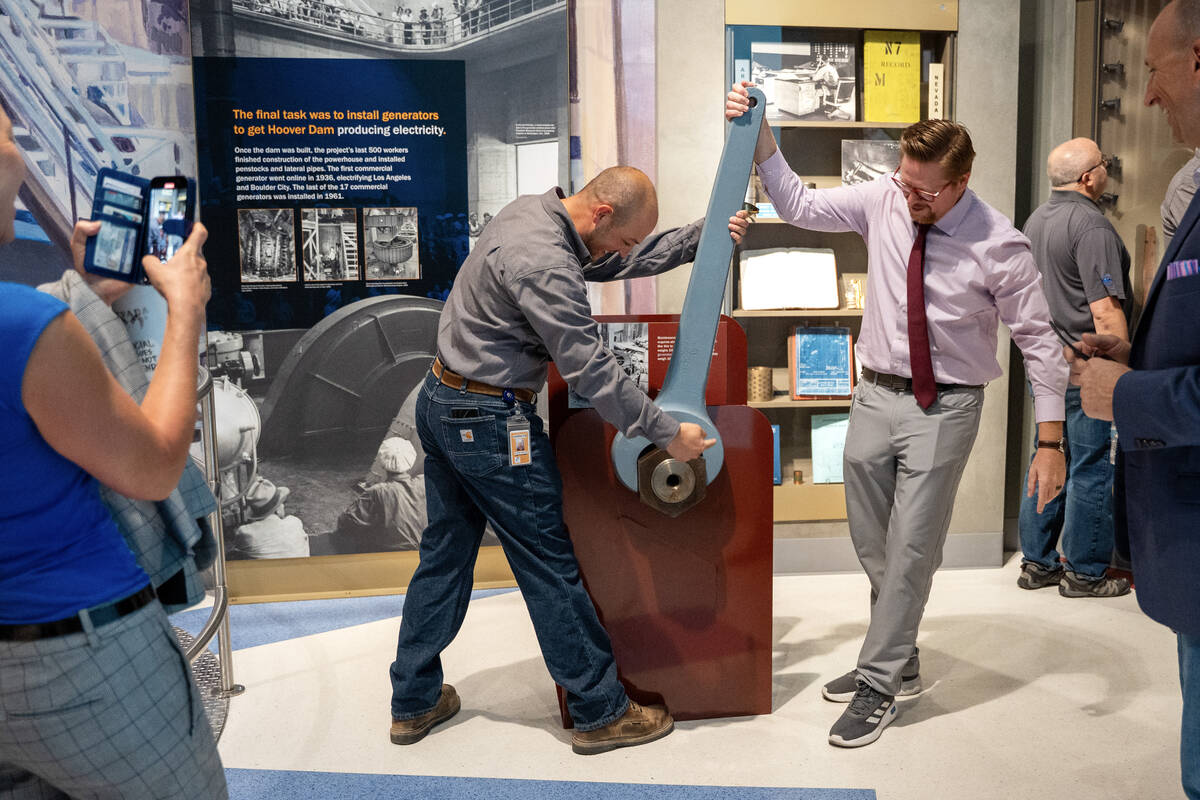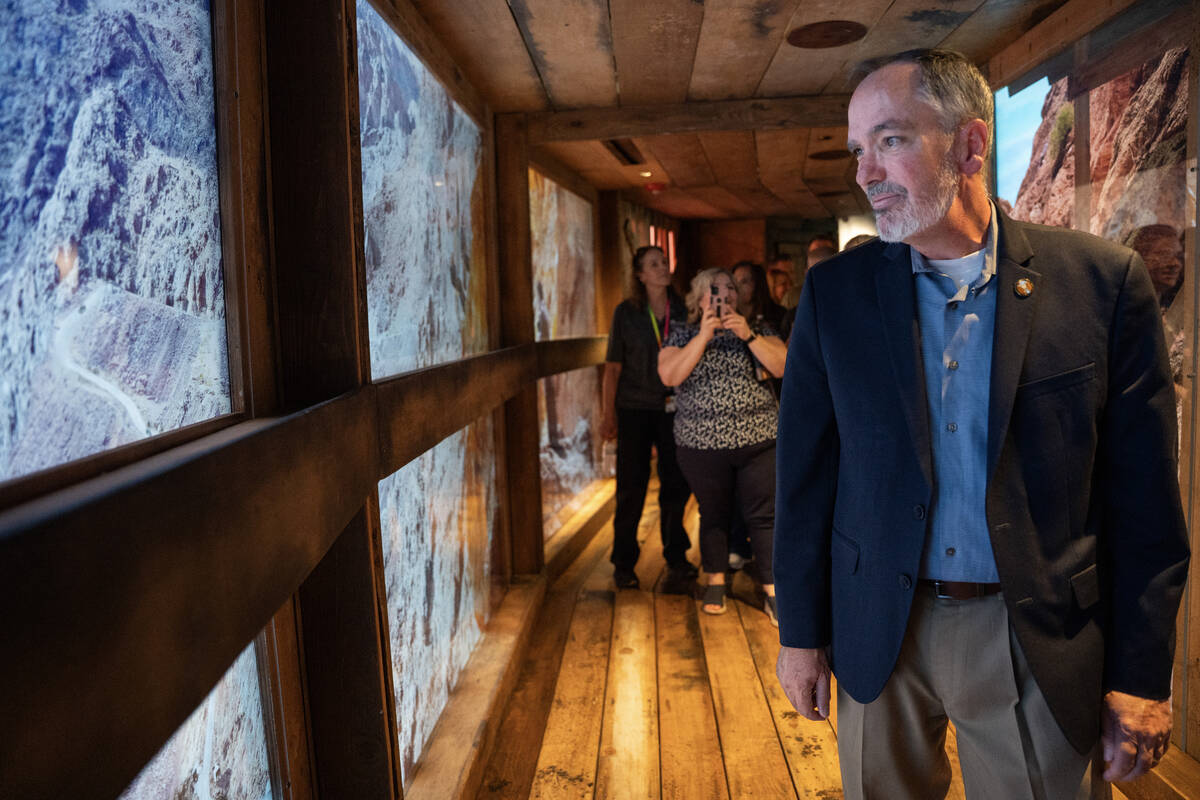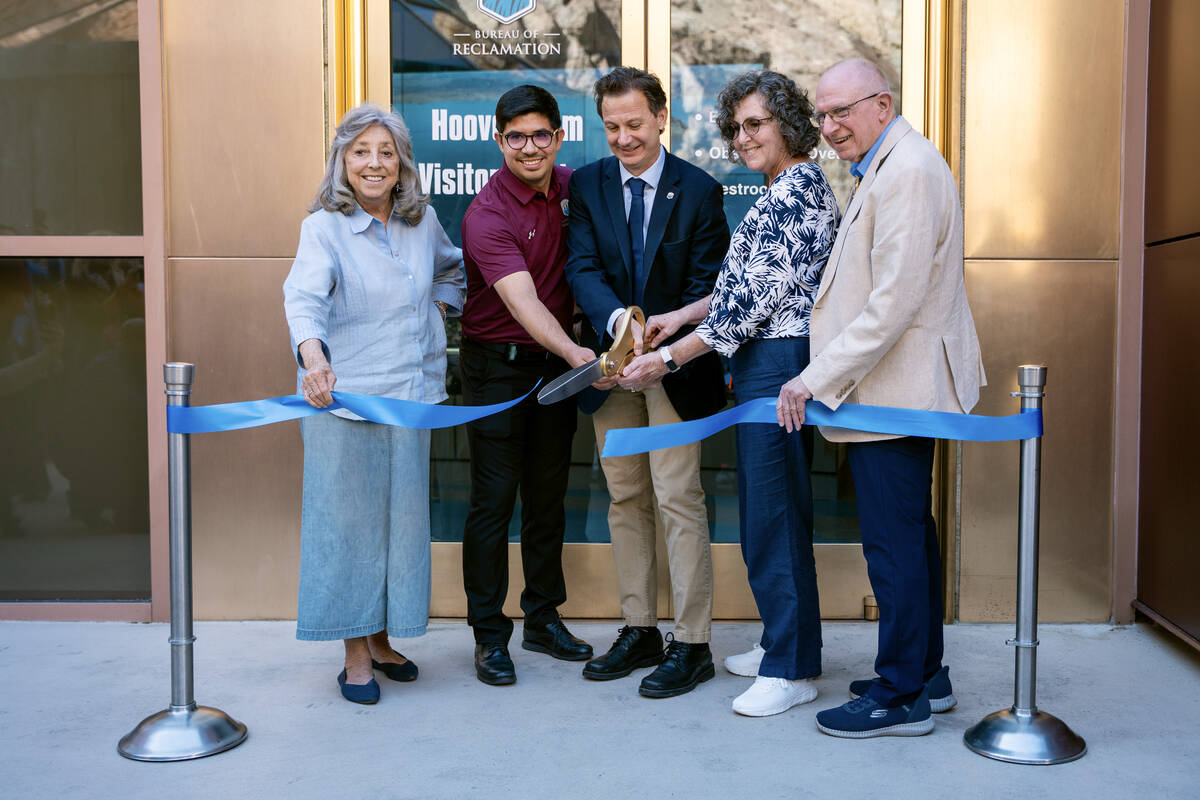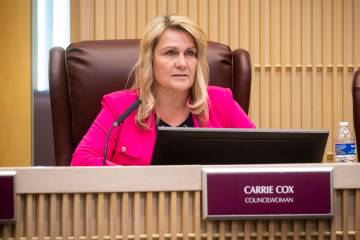Hoover Dam’s renovated visitor center plugs guests into Great Depression
Hoover Dam’s newly renovated visitor center transports guests back to the Great Depression and into the lives of the people who built what was then the world’s tallest dam.
The interactive exhibit brings the technology of the 21st century to the museum experience.
As visitors first enter the center, videos on the wall show dam workers constructing the dam. Another exhibit allows guests to pick up replicas of phones from the time and listen to the voices of dam workers explaining working conditions, while a nearby wall shows an actor describing what it was like to create a community in Boulder City during the dam’s construction.
The centerpiece of the exhibit is a replica of the dam system. Buttons outside the replica light each intricate part to highlight the complexity of the engineering feat building a dam the height of a 60-story building in the Black Canyon of the Colorado River.
The renovated center held a ribbon-cutting ceremony on Tuesday morning to celebrate the collaborative effort to transform the center into an interactive exhibit. The renovation began in January 2024 and was completed May 19.
Officials from the Bureau of Reclamation, Bureau of Land Management and the states of Nevada and Arizona spoke during the dedication ceremony.
Hoover Dam, which was completed in 1936, sees an estimated 7 million visitors annually, making Boulder City an attraction for tourists from all over the world. The Bureau of Reclamation completed the original visitor center in 1995 as a welcome and meeting point for tours.
The renovated center still serves the same purpose, but it also presents an opportunity for guests to engage with history in an interactive format.
“I’m honored to witness firsthand the hard work and dedication that continues today in fulfilling reclamation’s mission to manage, develop and protect water and related resources in an environmentally and economically sound manner in the interests of the American public,” said Genevieve Johnson, the lower Colorado acting regional director for the Bureau of Reclamation.
The $14 million capital improvement project was possible through funding from the Southern Nevada Public Land Management Act .
“SNPLA represents an unprecedented collaboration between federal, state and local partners that has achieved improvements in landscape, wild land fire mitigation and recreation facilities,” said Kim Prill, acting Nevada state director for the Bureau of Land Management.
The act disperses the profits from public land sales in Las Vegas to the State of Nevada Public Education Fund, Southern Nevada Water Authority and the Secretary of the Interior. The capital improvements to the Hoover Dam’s Visitor Center fall under the scope of the Secretary of Interior.
“Without SNPLA, this project would not be possible,” said Terri Saumier, Hoover Dam facilities service manager. “It would be way too big of an impact on the power rates.”
Hoover Dam is self-funded, meaning the dam’s daily operation, particularly the visitor service, is covered by the sale of power, tour tickets and parking, she said.
Saumier accepted three certificates of honor on behalf of the Hoover Dam from political officials. Nevada Sens. Catherine Cortez Masto and Jacky Rosen, as well as U.S. Rep. Susie Lee, sent representatives to present the honors.
“Really, it’s an honor,” Saumier said. “But I think it’s honestly about the significance of the Hoover Dam to not just the region, but to the United States.”
Tickets for the visitor center are $15 per person, and children ages 3 and younger are admitted for free. Guided tour tickets, such as the power plant and dam tours, include admission to the visitor center.
Contact Megan Howard at mhoward@reviewjournal.com. Follow her on X at @meganmhxward.
























